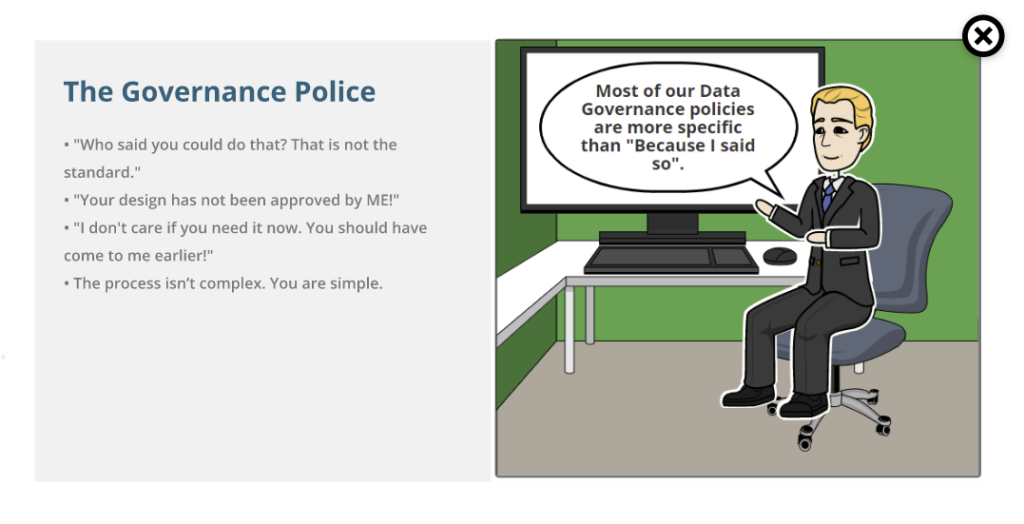Tuesday 28th November 2023
From Ben Clark
Does Enterprise Architecture need a rebrand? Enterprise Architecture has been around for well over 25 years now, and often struggles to make the impact that it needs to have, continuing to struggle with engagement at business, and more fundamentally CIO level.
I have lost count of the number of Chief Architects whose CIO’s simply “don’t get architecture.” The rebranding question is somewhat of a red herring, as we all know that if there was a workshop with all the architecture thought leaders worldwide, the chances of gaining consensus on what Enterprise Architecture should become would be next to nothing. We all know the old joke: What do you call 20 architects together in a room? An argument…
The subject of architectural rebranding came up in another well-attended seminar by Phil Allega. Whilst we clearly don’t see eye-to-eye when it comes to dress sense, he does speak a lot of sense, and it’s clear from the participants and vendors that I talked to that his voice carries an awful lot of weight through the community. According to Phil, 40% of his calls from CIOs about architecture are “What do we do with our EA practice?”. In his opening statement he made the point that Enterprise Architecture is a term that carries baggage and can be seen as an obstacle to success, which is what drives the discussion for a rebrand. Who remembers when Anderson Consulting became Accenture after the Enron scandal? Is there anyone reading this who has rebranded their practice?
The first rule of enterprise architecture: Yep, don’t talk about enterprise architecture! The last thing you ever want to tell a business stakeholder is that you are doing enterprise architecture – it is one thing that we fully agree with at Konvergent. You don’t mention it unless you like looking at someone with glazed eyes and a thousand-mile stare. In our experience, the only architecture output that grabs the attention of a wider audience is a well-formed Roadmap, which they can easily relate to.
One thing I found surprising, and possibly a bit shocking, is that according to Gartner, the business does not like you once you have been a Chief Architect for three years. They state that the Chief Architect is commonly perceived as someone who takes over and tells people what to do. I don’t think anyone reading this would want to be perceived that way, so what can you do to change that?
Due to the services Kovergent offers, I spend a lot of time discussing the makeup of Architecture teams with Architecture leaders and how to cope with the changes and influx of demands. The traditional way to build an architectural practice is to have siloed architects, whether they are based on business or technology domains, interspersed with subcontractors. Gartner proposed to modernise your architecture practice, by defining what services you will offer and then think of the skills you need to deliver those services. The Chief Architect would have people work across multiple domains and projects depending on the services offered and skills possessed. Ultimately, architecture functions need to be rebranded as internal management consulting firms operating more matrixed.

Theoretically, this is a great idea. It is close to the Architecture-as-a-Service model that Konvergent has, yet not without its challenges. Firstly, you recruited people to fit one operating model, and that model now has to change as you are now going down a services-based approach. Will you have people who are comfortable performing in a very flexible role? Is it what they signed up for?
Secondly, the very nature of that work style is that context-switching is hard, especially for some architects. We hired a Head of Architecture about three years ago. A very bright guy, Cambridge Educated et al. However, it did not work out, as he struggled with massively with the constant contact switching you have in a consulting role. Multiple problems across multiple clients are draining. If you are internal, you won’t have numerous clients, but you will have multiple domains. Will your team be energised or exhausted by such a change? Will they be happy not going as deep in some areas as they were used to?
To address these potential skills gaps, you might need to bring in people outside of architecture. Two of the most successful architecture leaders I have met in recent years used to be accountants. They get the business, understand finance and consequently, the stakeholders are more prepared to listen. This is a longer-term solution, though.

Phil was very, very clear that architects need to “put down their badge”. I don’t know if anyone remembers the following image, which we produced in 2020. One of the architecture personas was The Governance Police. We can all agree that this type of persona does not work well in most companies. However, architects are often forced into acting like the governance police because they are not involved in conversations early enough. If you don’t restructure the practice, will you always be in architecture purgatory? What can you do to work with the business better to create a co-solution?
One thing is very clear from Gartner’s research: If your IT function is considered a factory, i.e. keeping the lights on and not being involved in strategic decision-making, any form of transformation has very little chance of success. This section was aimed more at the CIO community and how they set up their IT functions but does play a part in the rebranding focus of architecture. How can you deliver change if you are only ever seen as someone who keeps the lights on? Will the vast disruption that AI is bringing allow skills like scenario-based planning to help you move the architecture discussion upwards?
Many years ago, I was told something I hold to this day. Your job title does not dictate your responsibilities; your responsibilities dictate your job title. The same applies to functional departments and capabilities. Architecture functions can still do architecture; it could be called something which might be friendlier and focused on the outcomes and value you bring to your organisation, but underneath, it will still be architecture.
The other question I ask architecture leaders is: how well you communicate the value you bring? Are you able to put a number on it? Can business stakeholders and, in many cases, your CIO clearly understand the value you bring to your organisation? The lack of clarity on the value of architecture is one of the biggest challenges to its full adoption by the business. If you can solve this, your brand recognition will be considerably higher than it is now.
In Konvergent’s ‘The Value and Effectiveness of Enterprise Architecture’ survey, which ran across 3000 Chief Architects earlier on in the year, we discovered that the lack of perceived value within architecture was the number one challenge to overcome for leaders this year. If an architecture function was able to link their work back to their organisations’ objectives, their perceived value increased by 2.5x.
Where I do see consistently failing across architecture functions, which would play a huge part of any corporate rebrand, is the visual consistency of the outputs. Think of your company and what they put out to their clients; now, compare that with what you put out to yours. With the outputs you create, how many of you can say you have a consistent set of logos, colours, and design elements that are modern, professional, and aligned with the broader corporate branding? Even if you do not change the name, take the opportunity to modernise and add consistency to your outputs to engage your stakeholders.
Forget the name. Focus on value, services, and creating a visually consistent set of outputs.
This article was never meant to give the answer, in fact the complete opposite. It is designed to provoke discussion and understanding on of what is possible. Who has tried the services approach and been successful? Who has tried and failed? Who has done something completely different? Architecture operates in the grey, so there is never going to be a right or a wrong answer, just plenty of discussion.
The 10th in the series of the Sessions with Konvergent roundtable events...
Integrated agile and governance is when multi-disciplinary teams apply agile approaches...
An Architecture tool is considered an essential part of an...
Poorly conceived visualisation can distract your audience from your core messaging...
Here is a selection of the most pertinent and interesting reads for Chief Architects this month, alongside our thoughts.
Konvergent,
The Hoxton, 70 Colombo St,
London,
SE1 8DP
T: +44 (0)20 3744 1256
E: info@konvergent.co.uk
| Cookie | Duration | Description |
|---|---|---|
| cookielawinfo-checkbox-analytics | 11 months | This cookie is set by GDPR Cookie Consent plugin. The cookie is used to store the user consent for the cookies in the category "Analytics". |
| cookielawinfo-checkbox-functional | 11 months | The cookie is set by GDPR cookie consent to record the user consent for the cookies in the category "Functional". |
| cookielawinfo-checkbox-necessary | 11 months | This cookie is set by GDPR Cookie Consent plugin. The cookies is used to store the user consent for the cookies in the category "Necessary". |
| cookielawinfo-checkbox-others | 11 months | This cookie is set by GDPR Cookie Consent plugin. The cookie is used to store the user consent for the cookies in the category "Other. |
| cookielawinfo-checkbox-performance | 11 months | This cookie is set by GDPR Cookie Consent plugin. The cookie is used to store the user consent for the cookies in the category "Performance". |
| viewed_cookie_policy | 11 months | The cookie is set by the GDPR Cookie Consent plugin and is used to store whether or not user has consented to the use of cookies. It does not store any personal data. |